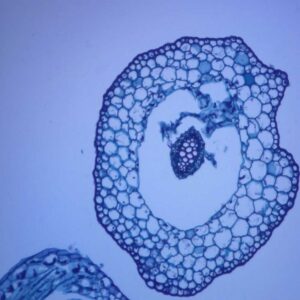Biology
-
Charts
Zoology Series IV
These vacuum-formed biological charts are made from heavy-duty plastic, offering deep relief for clear, tactile representation. Weatherproof and washable, they are built to withstand years of
classroom use. With realistic colors and an aesthetically pleasing design, these charts provide valuable assistance in helping students understand biological concepts. They are also specially designed to be helpful for blind students, making learning more accessible.Rat
Set of 8
(1) Rat anatomy,dissection showing internal organs (female)
(2) Rat digestive system
(3) Rat circulatory system
(4) Rat respiratory system
(5) Rat excretory system
(6) Rat reproductive system (male)
(7) Rat reproductive system (female)
(8) Rat brain & heartWhile size 25 x 35 cm is available in sets only, other sizes are available singly as well
BG13165 -
Charts
Zoology Series V
These vacuum-formed biological charts are made from heavy-duty plastic, offering deep relief for clear, tactile representation. Weatherproof and washable, they are built to withstand years of
classroom use. With realistic colors and an aesthetically pleasing design, these charts provide valuable assistance in helping students understand biological concepts. They are also specially designed to be helpful for blind students, making learning more accessible.Set of 8
(1) Life History of Honey Bee
(2) Life History of Silkworm
(3) Life History of House Fly
(4) Malarial Parasite (Plasmodium)
(5) Cockroach, circulatory & nervous systems
(6) Cockroach, external features
(7) Cockroach, digestive & respiratory systems
(8) Earthworm, circulatory & excretory systemsWhile size 25 x 35 cm is available in sets only, other sizes are available singly as well.
BG13167 -
Charts
Human Skin
These vacuum-formed biological charts are made from heavy-duty plastic, offering deep relief for clear, tactile representation. Weatherproof and washable, they are built to withstand years of classroom use. With realistic colors and an aesthetically pleasing design, these charts provide valuable assistance in helping students understand biological concepts. They are also specially designed to be helpful for blind students, making learning more accessible.
BG13169 -
Charts
Types of Human Muscular Tissues
These vacuum-formed biological charts are made from heavy-duty plastic, offering deep relief for clear, tactile representation. Weatherproof and washable, they are built to withstand years of classroom use. With realistic colors and an aesthetically pleasing design, these charts provide valuable assistance in helping students understand biological concepts. They are also specially designed to be helpful for blind students, making learning more accessible.
BG13173 -
Charts
Human Endocrine System
These vacuum-formed biological charts are made from heavy-duty plastic, offering deep relief for clear, tactile representation. Weatherproof and washable, they are built to withstand years of classroom use. With realistic colors and an aesthetically pleasing design, these charts provide valuable assistance in helping students understand biological concepts. They are also specially designed to be helpful for blind students, making learning more accessible.
BG13175















